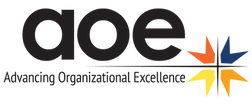The language of diversity
- Vikki Sicaras

- Dec 3, 2021
- 2 min read
Updated: Feb 19, 2024
In spring 2021, The Institute for Public Relations Center for Diversity, Equity, and Inclusion and The Wakeman Agency conducted a survey of almost 400 communications and public relations leaders to access diversity, equity and inclusion (DEI) perceptions and definitions. The resulting report describes how communication leaders are defining and discussing DEI in organizations.
Almost all of respondents agree that language or words can influence or reinforce power dynamics in the workplace with 87 percent noting that focusing on how language can evolve to be more equitable or inclusive is important for workplace discussions. Two-thirds of respondents agreed that the PR industry needs to develop standard definitions relating DEI, while one-third of respondents said they feel that the terms diversity, equity and inclusion were overused.
The survey also found that DEI related definitions are used inconsistently and are not clear. For example, 54 percent of employees claim to be comfortable with DEI related language used in their organization, and 52 percent have a clear understanding of definitions relate to DEI. However, 20 percent failed to recognize the difference between the terms “diversity” and “inclusion,” and 25 percent did not see a difference between “equity” and “equality.” Over half of respondents also felt that organizations are not explaining why the specific words used about diversity, equity and inclusion are important. When asked to provide definitions of diversity, equity, inclusion and social justice, responses were inaccurate, inconsistent and incomplete across the board.
While it is encouraging that so many organizations are starting DEI initiatives, it is unfortunate that about 75 percent of respondents reported that their organizations were more likely to verbally commit to DEI rather than follow through and take action. Organizations also prioritize their initiatives. Fifty-nine percent said race was a “high priority,” while sex, ethnicity, diversity of thought, cultural background, mental health and sexual orientation were noted as at least a “medium priority.” Neurodiversity, religious or spiritual beliefs and socioeconomic status were reported as either a “low priority” or “not a priority.”
These results prove that most professionals understand the impact that language has an impact on the culture and dynamics in the workplace. However, the results show that many people are uncomfortable with DEI language and are not choosing to make a difference regarding DEI language.
Is your organization ready to implement DEI language into the workplace to make a meaningful change? Contact AOE today to get started today!
.png)